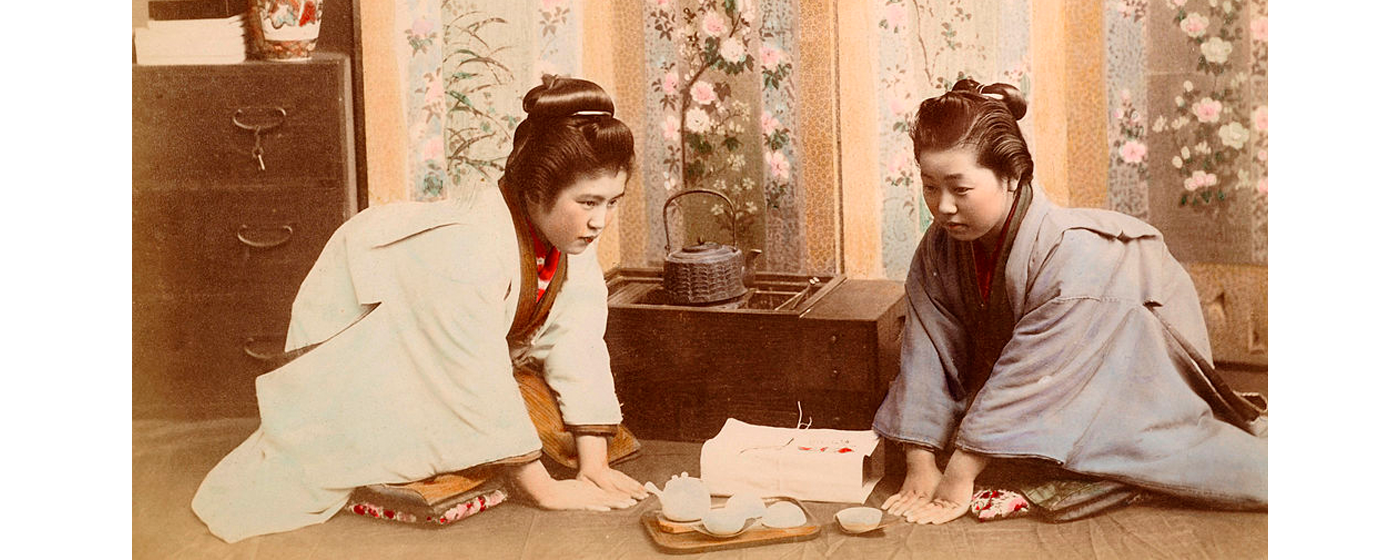The Japanese tea ceremony
A tea ritual, influenced by Zen Buddhism, gradually evolved in Japan to the point that it became a highly codified ceremony. The master of ceremony, the preparation of the drink and the associated gestures and decor all come together to create a unique moment of harmony and serenity.
How the ceremony evolved
It is said that Zen monks discovered a powdered green tea, known as matcha, in the 9th century in China and that a Buddhist monk brought it to Japan at the end of the 12th century. Use of this powder quickly became widespread. In the court, tea became a pretext for social gatherings. The samurais organised banquets, with blind-tastings, in which the challenge was to recognise the origin of various types of tea. Monks also appreciated tea, because it promoted meditation. A precise, codified ritual gradually evolved, marked by Zen principles of asceticism and austerity. The gestures that accompany the preparation of the tea are just as important as the drinking itself. The ceremony reached its climax in the 16th century and would play a key role in samurai way of life. During this period of political turmoil, endless wars took place between rival lords. Warriors would find refuge in this ritual, which offered a serene environment, far from combat and the turmoil of the world. The tea ceremony also had a more social side, where aesthetic appreciation was extremely important, yet carried out according to the acknowledged rules of the art.
The ritual
The tea ceremony would take place in a modest garden tea house. As the doorway was very low, guests had to bend down as they entered, suggesting humility. Shoes and any samurai weapons, would be left outside. Inside the decor was plain: a hanging scroll, a few flowers in a vase and a vessel for boiling water over a fire in the centre. A meal could be served at the beginning of the ceremony. The tea was always made with matcha (powdered green tea), that is mixed with hot water (not boiling) using a bamboo whisk. Traditionally, the bowl was passed from one guest to another.
The tea master
In the 16th century, the famous Japanese tea master Sen No Rikyû played a vital role in the development of the ceremony. He combined the four Taoist principles of harmony, respect, purity and serenity with the preparation of the tea, the decor of the room and the utensils. It was Sen No Rikyû who created the famous black and red Raku bowls, to highlight the green colour of the tea. His destiny really struck people’s imagination. An important, admired and, no doubt, envied figure, Rikyû was exiled and ordered to commit suicide by the governor, who perhaps felt overshadowed by him. Rikyû did not request a pardon; he obeyed and committed a form of honourable ritual suicide. He drew up the “seven secrets of the way of tea”, which serve as a guide to prepare the ceremony:
Prepare a delicious bowl of tea
Put charcoal on the fire to heat the water
Arrange flowers the way they are in the field
Express coolness in summer and heat in winter
Always be ahead of time
Be ready for rain, even if it is not raining
Give all your attention to every one of your guests
The tea ceremony is still taught today by Sen No Rikyû’s descendants, who run three schools where the tradition is passed on.
INOUE, Yasushi, 1991. Le Maître de thé. France : Stock.
PERRIER-ROBERT, Annie, 1999. Le thé. Paris : Éditions du Chêne - Hachette Livre.
BUTEL, Paul, 1989. Histoire du thé. Paris : Éditions Desjonquères.
CHA SANGMANEE, Kitti, DONZEL, Catherine, MELCHIOR-DURAND, Stéphane, STELLA, Alain,1996. L’ABCdaire du thé. Paris : Flammarion.




